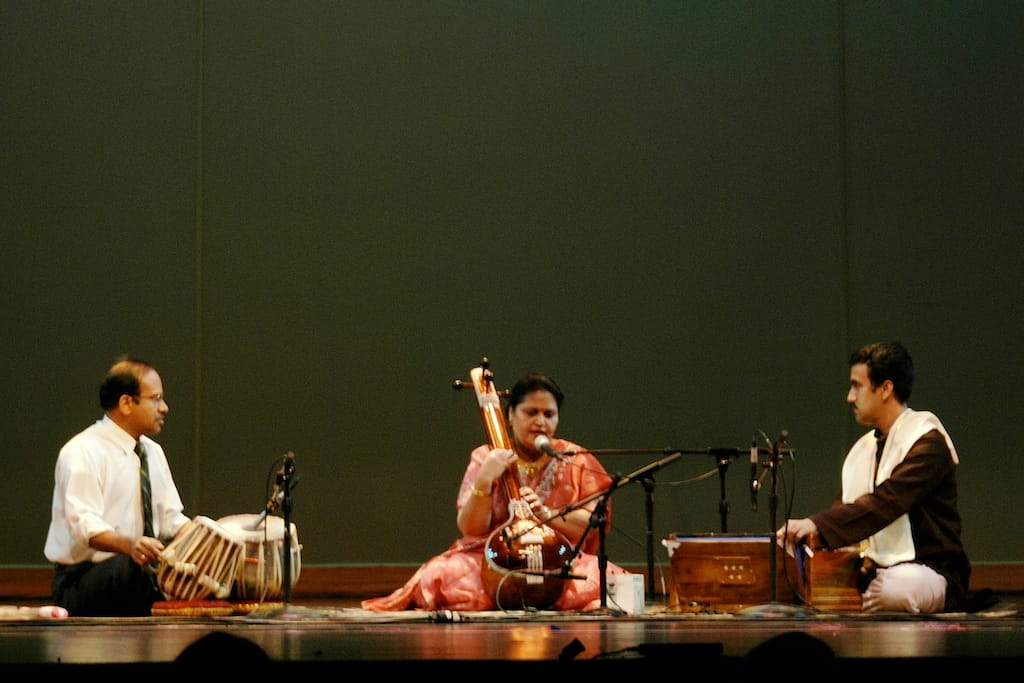Advanced Techniques in Indian Classical Music: Exploring Complex Ragas, Talas, and Improvisational Skills

Indian classical music, with its rich tapestry of ragas and talas, stands as one of the most sophisticated and intricate musical traditions in the world. This article delves into the advanced techniques that underpin this venerable art form, focusing on the complexities of ragas, the intricacies of talas, and the profound improvisational skills that elevate performances to transcendental experiences. Whether you are a seasoned aficionado or a newcomer curious about this genre, join us on a journey through the advanced realms of Indian classical music.
The Essence of Ragas
At the heart of Indian classical music lies the raga, a melodic framework that provides both structure and space for creativity. A raga is more than a scale; it is an emotive entity with distinct rules for ascending (aroha) and descending (avaroha) scales, characteristic phrases (pakad), and specific moods (rasa).
Exploring Complex Ragas
- Multifaceted Nature of Ragas:
-
- Some ragas like Raga Todi or Raga Darbari Kanada are known for their profound depth and complexity. Todi, for instance, features sharp notes (teevra swaras) that are used in a specific manner to evoke a mood of devotion and melancholy. The intricate use of komal (flat) and shuddha (natural) notes adds layers of nuance to the raga.
- Time Theory in Ragas:
- In Indian classical music, time theory (samay) dictates the appropriate time for performing each raga, believed to enhance its emotional impact. Advanced practitioners exploit this by performing ragas at their prescribed times, such as Raga Bhairav in the early morning, to evoke the intended emotional responses.
- Combination Ragas (Jod Ragas):
- Some ragas combine elements of two or more ragas, such as Raga Jog, which blends aspects of Raga Darbari Kanada and Raga Kafi. Mastering these requires an in-depth understanding of the parent ragas and the ability to seamlessly merge their characteristics.
The Rhythmic Foundation: Talas
Equally vital to Indian classical music is the tala, the rhythmic cycle that provides the temporal framework for a performance. Talas range from simple cycles to incredibly complex structures, each with its own character and challenges.
Exploring Complex Talas
- Uncommon Talas:
-
- While cycles like Teental (16 beats) are widely used, more complex talas such as Jhoomra (14 beats) or Rupak (7 beats) demand a higher level of proficiency. For instance, Rupak tala, with its asymmetric 3+2+2 beat structure, requires precise timing and a deep understanding of rhythmic patterns.
- Rhythmic Improvisation (Layakari):
- Layakari involves the manipulation of tempo and rhythmic patterns within a tala. Advanced musicians might employ techniques like double speed (dugun), triple speed (tigun), and complex cross-rhythms (khand layakari), creating a dynamic interplay between fixed rhythm and spontaneous creativity.
- Tihai:
- A tihai is a rhythmic phrase repeated three times, landing on the sam (the first beat of the cycle). Advanced tihais are crafted with mathematical precision, often spanning multiple cycles, showcasing the artist’s command over rhythm and timing.
The Art of Improvisation
Improvisation, or manodharma, is the soul of Indian classical music, allowing musicians to infuse their performances with personal expression and spontaneity.
Exploring Improvisational Skills
- Alap:
-
- The alap is a slow, non-rhythmic introduction to a raga, where the musician explores the raga’s mood and contours. Advanced alaps require a profound understanding of the raga’s nuances, enabling the artist to create a unique and evocative rendition.
- Jod and Jhala:
- Following the alap, the jod introduces a sense of rhythm, and the jhala accelerates to a rapid, virtuosic finale. These sections showcase the artist’s technical prowess and improvisational creativity, as they weave intricate melodic and rhythmic patterns.
- Bol Bants and Bol Taans:
- In vocal music, bol bants involve the rhythmic division of lyrics, while bol taans are fast, intricate runs on a single syllable. These techniques highlight the singer’s control over both melody and rhythm, requiring a seamless integration of voice modulation and breath control.
- Tantrakari Ang:
- This instrumental technique mimics the fast, intricate patterns typical of vocal music. For instance, sitar players might execute rapid, complex patterns that echo the virtuosic taans of vocalists, demanding exceptional finger dexterity and precision.
The Synergy of Melody and Rhythm
The true magic of Indian classical music emerges from the interplay between melody and rhythm. When an adept vocalist or instrumentalist collaborates with a skilled tabla player, the resulting performance is a dialogue of intricate patterns and spontaneous improvisations.
A Live Performance
Imagine a live performance of Raga Yaman, a popular evening raga. The sitarist begins with a slow alap, gently unveiling the raga’s serene and contemplative mood. As the performance progresses into the jod and jhala, the tabla joins, and the tempo increases. The musicians engage in a rhythmic interplay, with the tabla echoing and complementing the sitar’s complex patterns. The sitarist weaves in rapid bol taans, showcasing technical brilliance, while the tabla player responds with intricate tihais, driving the performance to an exhilarating crescendo.
Conclusion
Advanced techniques in Indian classical music are a testament to the genre’s depth and sophistication. Mastery of complex ragas, talas, and improvisational skills requires years of dedicated practice, a profound understanding of musical theory, and an innate sense of creativity. For seasoned listeners, these techniques offer a rich and immersive experience, while for new enthusiasts, they provide a window into the boundless possibilities of this timeless art form.





